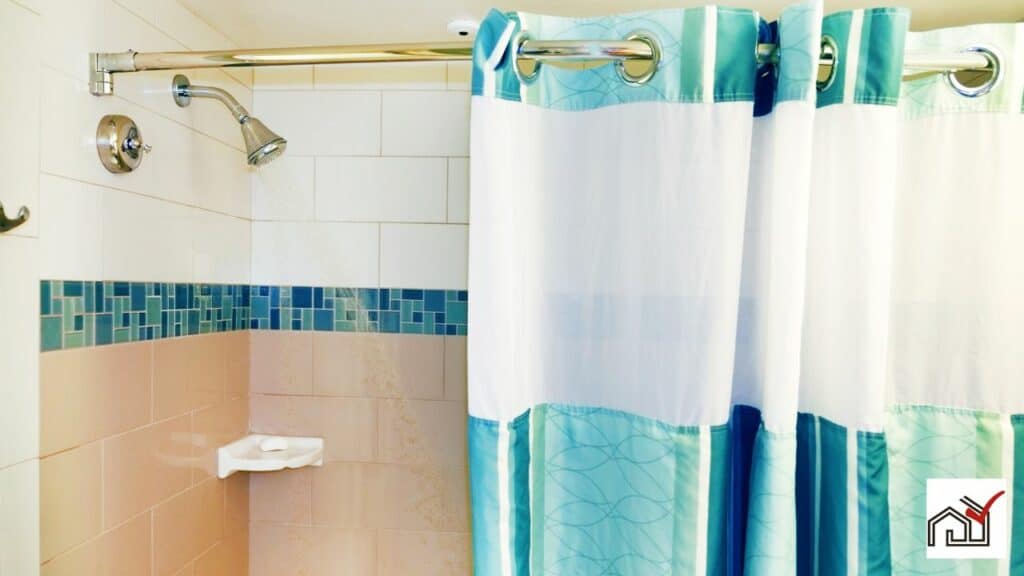The correct way to hang a shower curtain liner is with the finished side facing out and the unfinished side, which includes the seams and grommets, facing the inside of the shower. This setup helps to keep water inside the shower and ensures the bathroom looks neat.
This text discusses how to properly hang a shower curtain liner, the differences between plastic and fabric liners, the best lengths for liners, and tips for maintaining them.
Understanding Shower Liner Orientation
The correct orientation of a shower curtain liner is important for maintaining hygiene and the appearance of the bathroom. Shower curtain liners often have a smooth side and a textured side. The textured side should face the shower to repel water effectively and reduce soap scum and mildew buildup. This also helps to keep the bathroom floor dry, preventing water damage and mold.
For fabric liners, the water-repellent side should face the shower to extend the liner's life and keep the bathroom clean. The orientation of the liner inside the tub creates a barrier against water leakage.
The side of the liner designed to resist water should face the shower. This ensures the protection of any decorative curtain used and maintains a dry bathroom environment.
Liner Placement: Inside Vs. Outside
The shower curtain liner should be placed inside the bathtub or shower area to prevent water from spilling onto the bathroom floor. This is essential for maintaining cleanliness and the functionality of the liner, which serves as a barrier against water damage.
The smooth side of the liner should face the shower to ensure water flows into the tub or shower base, reducing the risk of a slippery floor or water damage. The outside-facing side of the liner is less crucial for preventing leaks but may be considered for its visual appeal if no decorative curtain is used.
For effective water containment, the liner must be inside. Hanging the shower curtain liner inside the tub or shower stall is necessary to prevent mess, maintain bathroom cleanliness, and prevent mold and mildew caused by moisture.
Comparing Plastic and Fabric Liners
Plastic shower curtain liners are known for being easy to maintain, resistant to mold and mildew, and generally less expensive. They are widely available and offer a simple solution for shower upkeep.
Fabric liners, while often more costly, add an element of sophistication to bathroom decor. They require more frequent cleaning but are typically machine washable, which can help prevent bacteria and mold growth. Over time, this maintenance can make fabric liners more durable and possibly more economical.
Choosing between plastic and fabric liners depends on personal preferences regarding maintenance and style. Plastic liners are practical for those seeking convenience, while fabric liners suit those who prefer a refined look and are willing to put in the cleaning effort. Both types aim to effectively contain water and should be selected based on the user's needs and lifestyle.
Determining Ideal Liner Length
Choose a shower curtain liner that minimizes water leakage without being so long that it causes tripping or mold growth. Measure the height of your shower area or tub to find the right size, as not all liners will fit the height of your curtain rod.
For protection against mold, the liner should either touch the floor lightly or hang about an inch above it. This helps contain water and prevents the bottom from getting wet and moldy. The side of the liner with labels or seams should face the inside of the tub to direct water towards the drain.
Shower curtain liners often have weights or magnets to keep them in place. However, if a liner is too long, these features won't stop problems from excessive length. When buying a liner, check the dimensions on the package and compare them to your shower's measurements. If needed, you can trim the liner carefully to prevent damage.
Install the curtain liner inside the tub or shower enclosure. Choosing the correct length is crucial for keeping your bathroom clean, safe, and visually appealing.
Maintenance and Replacement Tips
Proper maintenance and timely replacement of shower curtain liners are crucial for bathroom cleanliness and mold prevention. Fabric shower curtains require more maintenance than plastic ones due to their tendency to absorb moisture. Plastic liners need less frequent washing, but should still be checked for mold and mildew.
Shower curtain liners should be replaced every six months to a year, depending on usage and the presence of hard water. Regular inspections for wear and mildew are necessary. Fabric liners can be machine-washed, while plastic liners can be cleaned with a suitable cleaner.
After each use, ensure the liner is fully extended to dry, promoting air circulation and preventing mold growth. The liner should be installed with the water-repellent side facing the shower, which is usually the smoother side.
Maintaining and replacing shower curtain liners according to their material is important for a hygienic bathroom.




